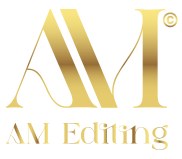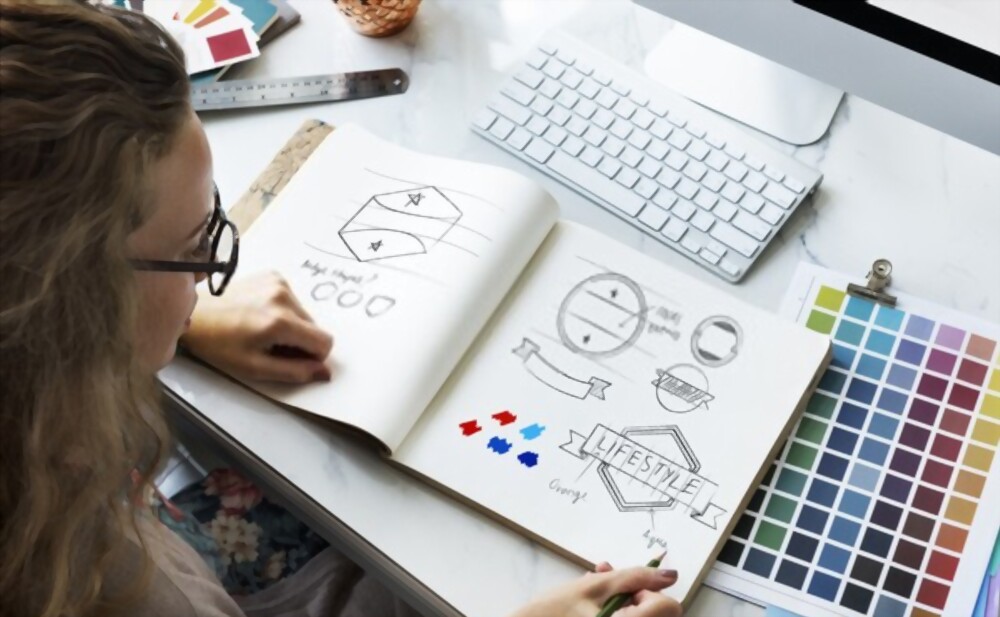How Do I Design A Logo For My Website?
 AM Editing
AM EditingHow Do I Design A Logo For My Website?
One of the key factors in the website construction phase is that choosing a logo is often taken too lightly. This used to be a sign of anything, but with the abundance of online content, we’ve hand-picked one, and it’s become a must-have in seconds.
When choosing a custom logo design
 for your website, there are some factors to consider, but the first feature is the message you want to convey to the audience.
It’s easy to think about personal taste when creating a logo, but the proper logic is to think about the message/emotion you want to convey and make that the primary goal.
Another factor when creating a custom logo for your website is that it can also be used on mobile devices. There’s no point in creating a logo with text that refers to a company that’s hard to read on a smartphone. Instead, you should choose a harmonious minimal logo.
Check out your competitors’ logos for ideas. See how the logo has evolved over the years, not just one. This way, you can understand where your company is headed and adapt to current trends. You can also invest in ideas to stand out.
for your website, there are some factors to consider, but the first feature is the message you want to convey to the audience.
It’s easy to think about personal taste when creating a logo, but the proper logic is to think about the message/emotion you want to convey and make that the primary goal.
Another factor when creating a custom logo for your website is that it can also be used on mobile devices. There’s no point in creating a logo with text that refers to a company that’s hard to read on a smartphone. Instead, you should choose a harmonious minimal logo.
Check out your competitors’ logos for ideas. See how the logo has evolved over the years, not just one. This way, you can understand where your company is headed and adapt to current trends. You can also invest in ideas to stand out.
What Makes A Good Logo?
A logo represents a company and its work. It requires careful planning and design. Yet, this does not mean that the logo must be geometrically accurate. A slight imperfection can make a logo more unique and trustworthy. For example, Google’s new logo is also geometrically incorrect, which is part of what makes Google a unique brand. Your logo should be unique and different from your competitors’ logos. You should use colors that relate to your business. Most importantly, it must describe what the mission of your business is. Whether you’re a new company looking to design a custom logo or a well-known brand looking to redesign your logo, this blog post will give you some important tips on how you can design an attractive logo for your website.
7 Important Tips You Should Consider When Designing A Logo For Your Website.
Start with your brand. Your existing branding will harmonize with your logo, so it’s a good idea to evaluate your brand identity and personality before getting started. So, for example, consider your target audience and elements of your custom logo like the color scheme and graphics. Please make sure the concepts or graphics match with them.
Take logo design inspirations from others.
I recommend getting inspiration from others so that your ideas come true. After all, you can’t design an effective logo if you don’t have an idea or take logo inspiration from others. There are several sites out there where designers upload their work, and you must check out there. For example, if you are a social media person, check hashtags and a logo design account on Instagram to get inspired. Take note to design elements such as color, form, and text. Checking great logos online can help you understand what your logo must look like.
Groundwork is important.
Sketching is an important gateway to designing a custom logo. Illustrator allows you to do it easily with pen and paper drawings or sketches. Most importantly, rushing or skipping this step will jeopardize the end result. Begin with sketching 10 to 20 logo ideas, then create more and more variations of the concept. If nothing works, start over and sketch out new ideas. Influential graphic designers spend more time on this preparation than any other stage of the logo design process.
Be different.
You have to be prominent with a unique style to stand out from the competition. Be advanced and stand out instead of replicating others’ patterns or styles. So how do become different? Try to break design rules and take dares. Experiment with different styles to find what works best for your audience. Experiment with varying blends of color until you find one that makes your logo unique. Enjoy the designing software you use and tweak the design until you like it.
Keep in mind your brand’s color scheme.
If your brand has identified specific colors to use in its logo, marketing, and other resources, it’s important that those colors appear in your logo. Constant use of color increases acquaintance. You want your audience to be able to connect with your logo emotionally. If your brand recognizes specific colors, the audience will subconsciously associate them with the colors. If your brand doesn’t already have an established color scheme, study color psychology to help you choose the right color. For instance, red signifies strength, passion, liveliness, and self-assurance but can also represent fear.
Keep it simple.
The simpler the logo, the easier it is to identify. For example, Nike’s logo is straightforward and one of the most famous in the world. When brainstorming and doodling, follow the rule of keeping it simple from the beginning of the design process. In many cases, you can start with a relatively complex design and end up with a simpler version. Plan your strategy down to the basics and eliminate all redundant elements.
Get feedback from your targeted audience.
Show your logo to people who match your ideal client profile. You can choose to display numerous designs or only the most likely ones. Ask questions that tell reactions to your logo. For example, do you find it boring, stimulating, horrible, or striking? Common or unique? Moreover, check that your logo delivers your brand’s mission, is it easy to read, familiar, and matches your brand’s and industry’s knowledge.
Conclusion
Versatility is key when it comes to creating a custom logo design for your website. A logo variation that fits in a limited space makes your brand recognizable on any platform or device. The purpose of this blog is to take a closer look at what works and give non-designers more options for designing a logo for their website. If you consider these tips when designing your custom logo, I’m sure it will help you design your future logo.
Subscribe to my newsletter
Read articles from AM Editing directly inside your inbox. Subscribe to the newsletter, and don't miss out.
Written by
